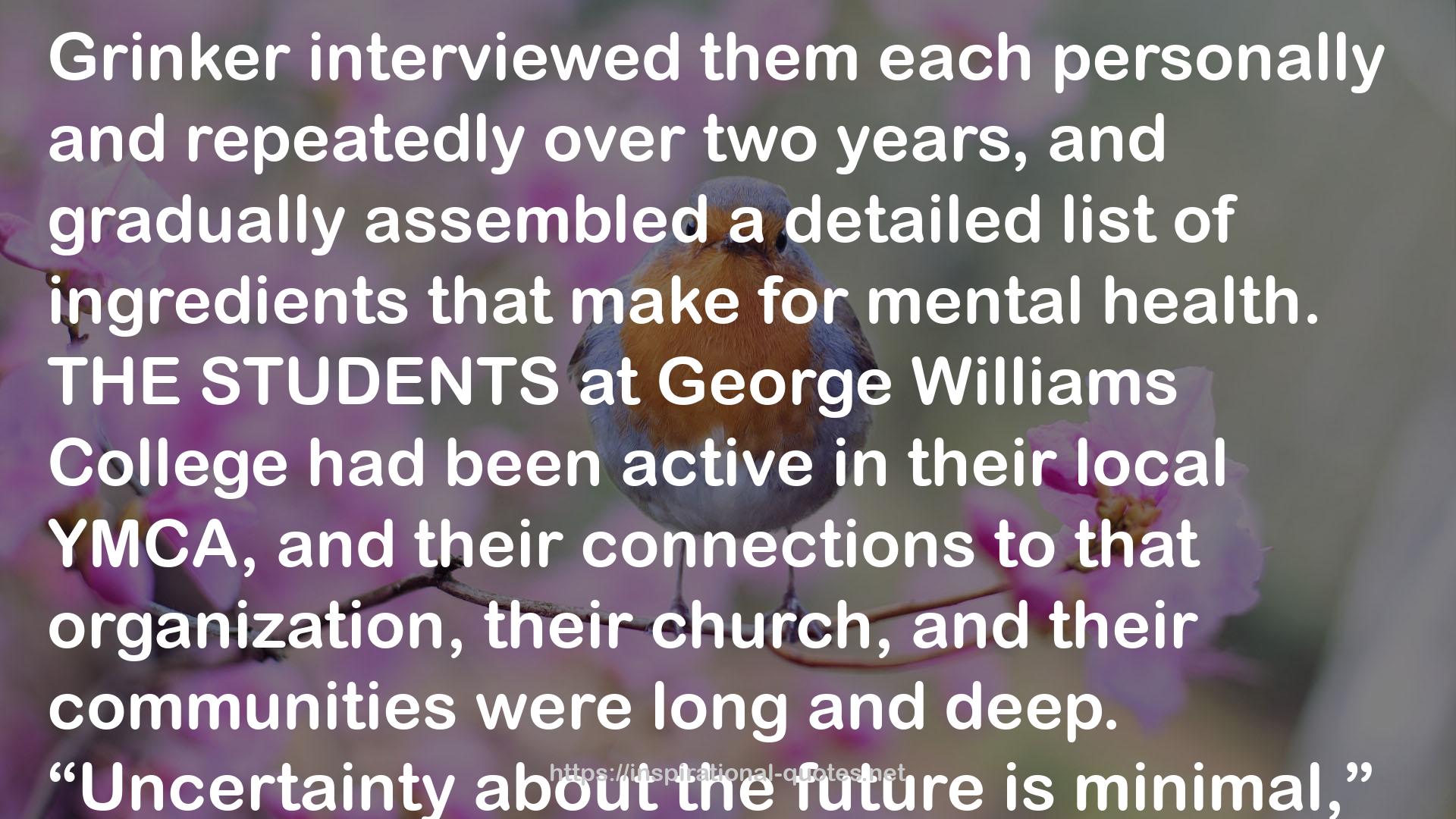" Grinker interviewed them each personally and repeatedly over two years, and gradually assembled a detailed list of ingredients that make for mental health. THE STUDENTS at George Williams College had been active in their local YMCA, and their connections to that organization, their church, and their communities were long and deep. “Uncertainty about the future is minimal,” Grinker noted, among these “upright young men.” They came from white- and blue-collar families in the Midwest. They had slightly above average IQs, average college grades (mostly C’s), and no childhood or adolescent conflicts with their families. Two-thirds said they had been disciplined firmly by their parents, with well-established boundaries for conduct, but they saw these constraints as beneficial and reasonable. Except for four people with abnormal mood states (two with hypomania and two with depression), two stutterers, two people who displayed paranoid thinking, and one person with recurrent nightmares, the great majority (85 percent) lacked even the mildest mental abnormality. Grinker noted that though the subjects enjoyed team sports in high school, “only sometimes did one claim to be the leader of a social, work, or sport group.” These men were better designed to be followers than leaders: “The average subject has had practically no trouble with those in authority” and even “maintains that he would abide by rules which he considered to be unfair.” Overall there is a “picture of an individual who would be submissive to authority, but not slavishly.” Searching for a term less loaded than “normal” to describe these people, Grinker called them homoclites, a Latinate term he invented to indicate “those who follow a common rule. "
― S. Nassir Ghaemi , A First-Rate Madness: Uncovering the Links Between Leadership and Mental Illness
